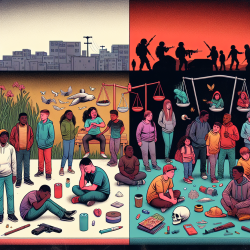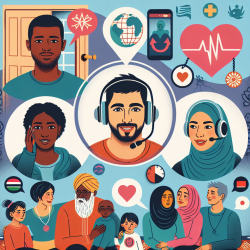Introduction
The recent findings from the 2021 Youth Risk Behavior Survey (YRBS) highlight the critical public health concern of community violence and its associated risks among high school students in the United States. This blog aims to provide practitioners with insights into how these findings can be utilized to improve their practice and encourage further research into comprehensive violence prevention strategies.
Key Findings from the Research
The study reveals that approximately 20% of high school students have witnessed community violence, and 3.5% have carried a gun in the past 12 months. The data indicates significant disparities based on race, ethnicity, sex, and sexual identity. Notably, American Indian or Alaska Native, Black, and Hispanic students, as well as males and lesbian, gay, or bisexual students, are more likely to witness community violence and report gun carrying compared to their peers.
These exposures are linked to increased odds of substance use, including binge drinking and marijuana use, and heightened suicide risk. The research underscores the importance of addressing these issues through comprehensive, evidence-based prevention strategies that incorporate health equity.
Implications for Practitioners
Practitioners working with youth, particularly in educational settings, can leverage these findings to enhance their interventions. Here are some strategies to consider:
- Promote Safe and Supportive Environments: Schools can play a pivotal role by fostering environments where students feel connected to peers and trusted adults. Programs that focus on social-emotional learning, conflict resolution, and violence prevention can be integrated into the school curriculum.
- Implement Family-Based Interventions: Encourage parenting programs that support healthy development and provide skills for managing stress and conflict. Family engagement can be crucial in mitigating the effects of community violence.
- Engage in Community-Level Strategies: Work with community organizations to modify physical environments, offer mentoring programs, and change community norms to reduce violence exposure.
- Focus on Health Equity: Address structural inequities that contribute to disparities in violence exposure. Advocate for policies that provide economic support and promote social justice.
Encouraging Further Research
While the YRBS provides valuable insights, there is a need for more prospective research to explore causal mechanisms and strengthen prevention efforts. Practitioners are encouraged to collaborate with researchers to develop and evaluate interventions that address the root causes of violence and its associated risks.
Conclusion
Community violence and its associated risks remain significant concerns for youth in the United States. By implementing evidence-based strategies and focusing on health equity, practitioners can help create safer environments for all students. For those interested in delving deeper into the research, the original paper can be accessed here: Witnessing Community Violence, Gun Carrying, and Associations with Substance Use and Suicide Risk Among High School Students — Youth Risk Behavior Survey, United States, 2021.










